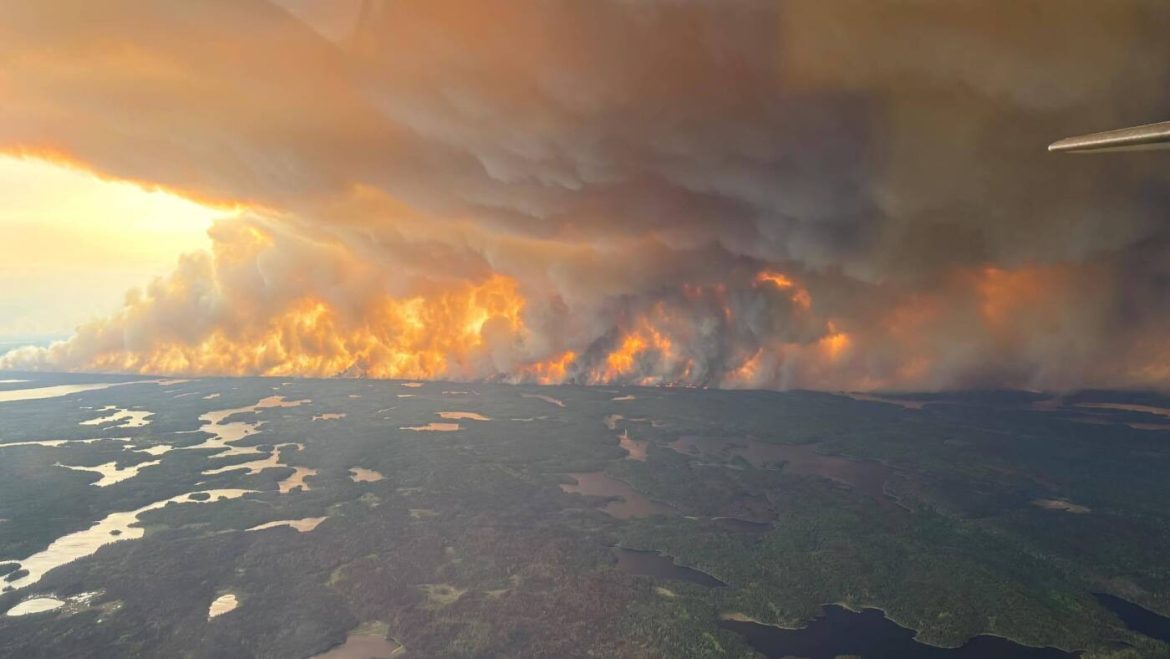The Escalating Crisis of Canadian Wildfires: Smoke Impact Across North America
Canadian wildfires have surged to alarming levels in 2024, igniting one of the most extensive wildfire seasons in recent history. The fires, primarily concentrated in Manitoba and other regions of Canada, have forced mass evacuations and unleashed plumes of smoke that have drifted across vast areas of the United States. This smoke has significantly impacted air quality, visibility, and public health across much of North America.
—
Current Scope and Severity of the Wildfires
The wildfires in Canada have burned hundreds of thousands of acres, with more than 400 active fires reported in multiple provinces. Notably, Manitoba is facing one of its largest wildfire evacuations ever, with approximately 17,000 residents ordered to flee. Other provinces, including Nova Scotia, have also experienced large blistering fires, contributing to a total of over 5 million acres burned nationwide this year.
These wildfires rank among the worst in decades, fueled by dry conditions, high temperatures, and shifting weather patterns. Their intensity and scale are unprecedented, with blazes continuing to spread and challenge firefighting resources.
—
Air Quality and Health Impacts on the United States
The smoke from these Canadian wildfires has traveled far beyond the immediate fire zones, crossing the U.S.-Canada border and blanketing large portions of the Great Lakes region, the Midwest, and parts of the U.S. East Coast. The smoke presence is persistent, with some forecasts predicting it will linger for days.
Millions of Americans, spanning multiple states—from the Great Lakes to the Northeast—are experiencing reduced air quality levels. Cities such as New York, Philadelphia, and Boston report hazy skies and unhealthy air conditions attributable to the wildfire smoke. Such diminished air quality poses risks particularly to vulnerable groups, including young children, the elderly, and individuals with respiratory or cardiovascular conditions.
The thick smoke dims sunlight, creating eerily colorful sunrises and sunsets, but it also degrades visibility, complicating transportation and daily activities. Health officials have issued advisories to limit outdoor exposure when possible and to monitor air quality indexes closely.
—
Environmental and Climatic Implications
The frequency and scale of these wildfires reflect broader environmental stressors. Experts note that warmer temperatures, drought conditions, and wind patterns are exacerbating fire risks. The smoke traveling thousands of miles carries particulate matter and pollutants, affecting not only local but continental air quality.
There is increasing awareness that such large-scale fire seasons bear implications beyond immediate damage—potentially influencing public attitudes toward climate change. The visible and palpable consequences of wildfires, spreading smoke across inhabited areas far from the fires themselves, underscore interlinked ecological vulnerabilities and climate dynamics.
—
Response and Preparedness
Canadian authorities continue to manage firefighting and evacuation efforts amid this crisis. The scale of evacuations, such as those in Manitoba, represents logistical challenges in ensuring public safety and resource deployment. Meanwhile, U.S. agencies monitor smoke movement via satellite and air quality sensors to advise communities on risks.
Public communication remains critical. Residents in affected U.S. regions are urged to stay informed through updated air quality reports and follow health guidance. Similarly, preparedness for wildfire seasons may see increased emphasis as these events recur with greater intensity.
—
Conclusion: A Continental Challenge
The ongoing Canadian wildfires illustrate a complex environmental challenge whose impacts defy national borders. Smoke spreading across the Great Lakes, the U.S. Midwest, and the Northeast highlights how interconnected air and climate systems are, and how wildfire disasters can ripple widely through societies.
As fires rage and evacuations continue, understanding this event demands attention to immediate public safety concerns as well as the broader environmental trends fueling such destructive episodes. The persistence of smoke over populated U.S. areas serves as a stark reminder of the urgency to adapt and respond to evolving wildfire risks in North America.


